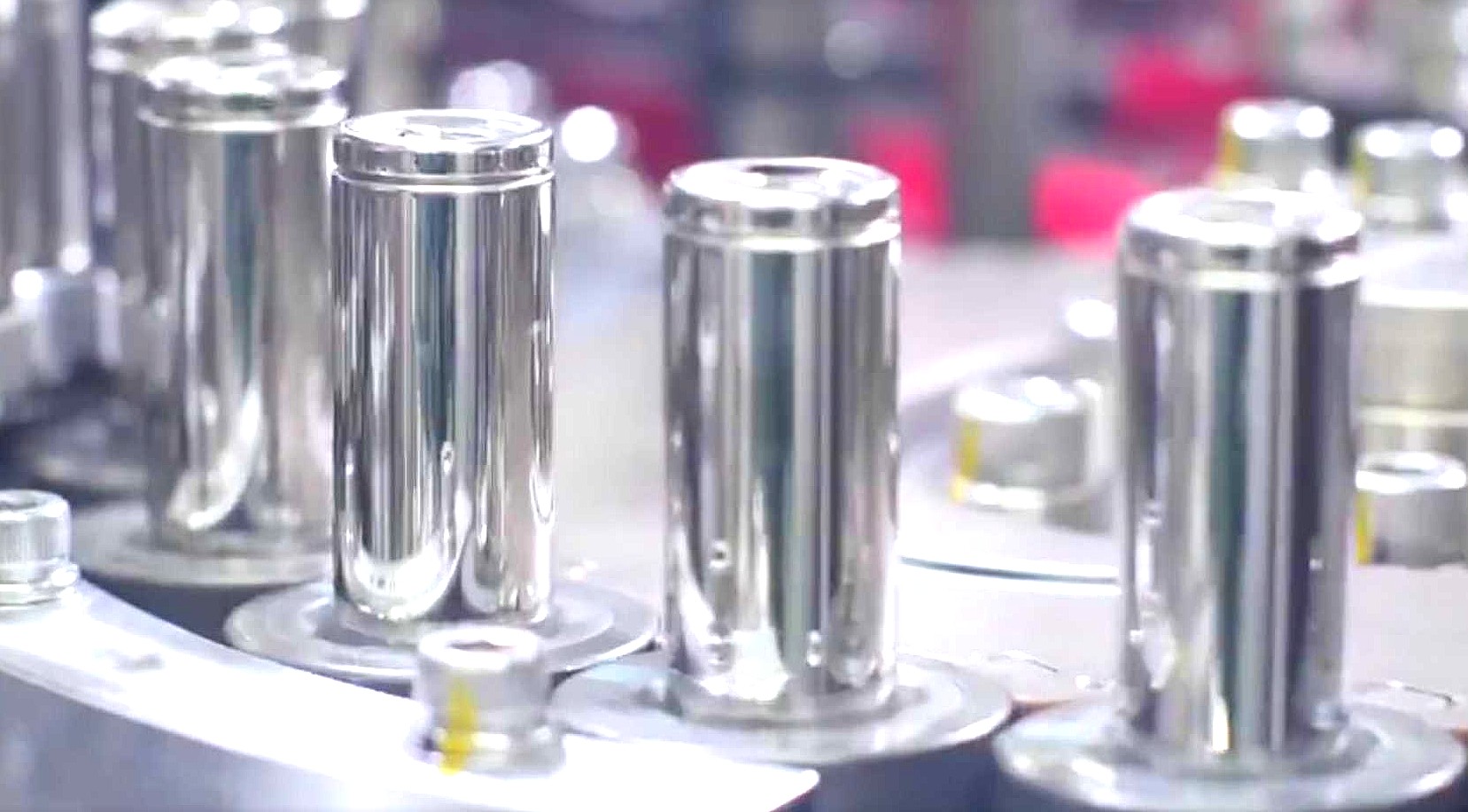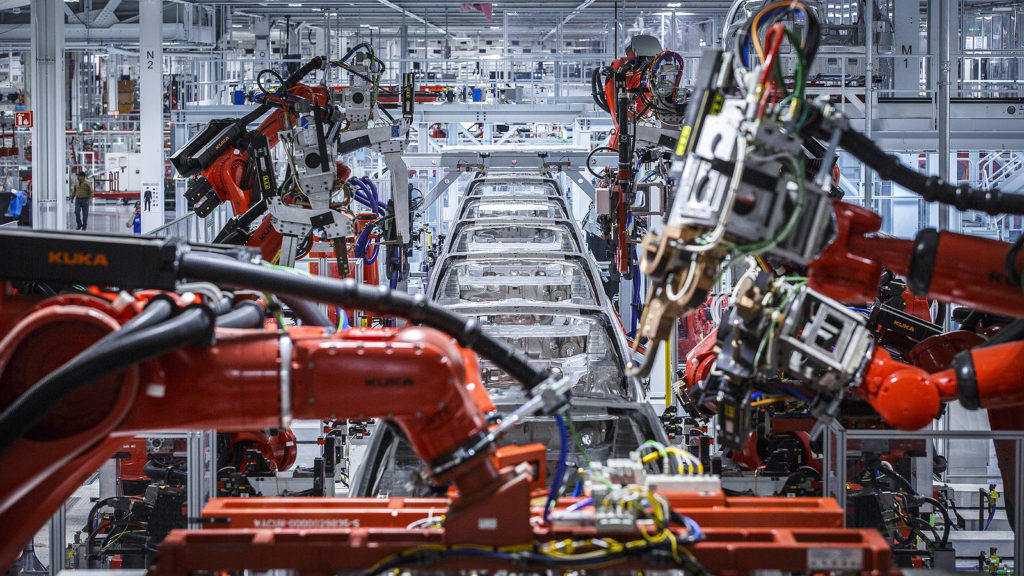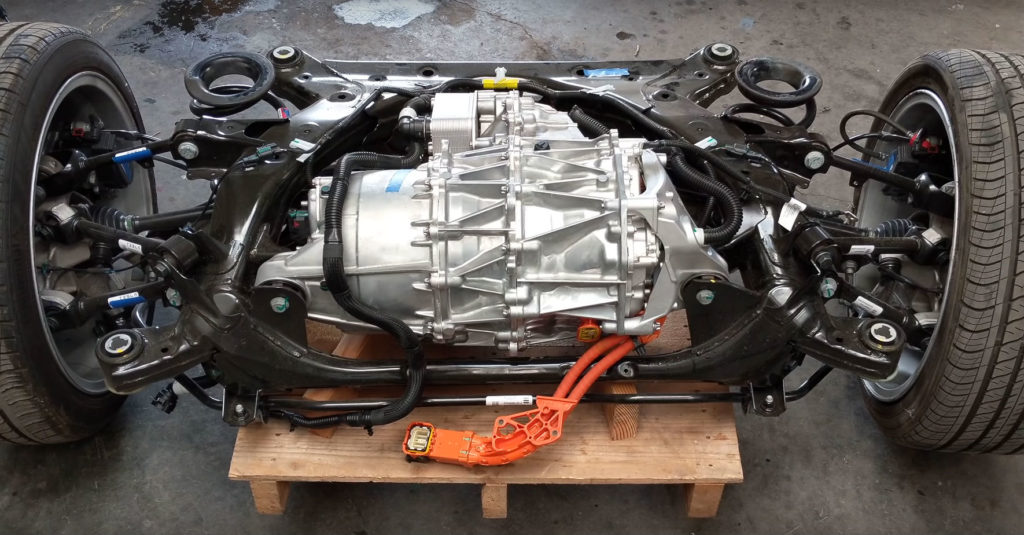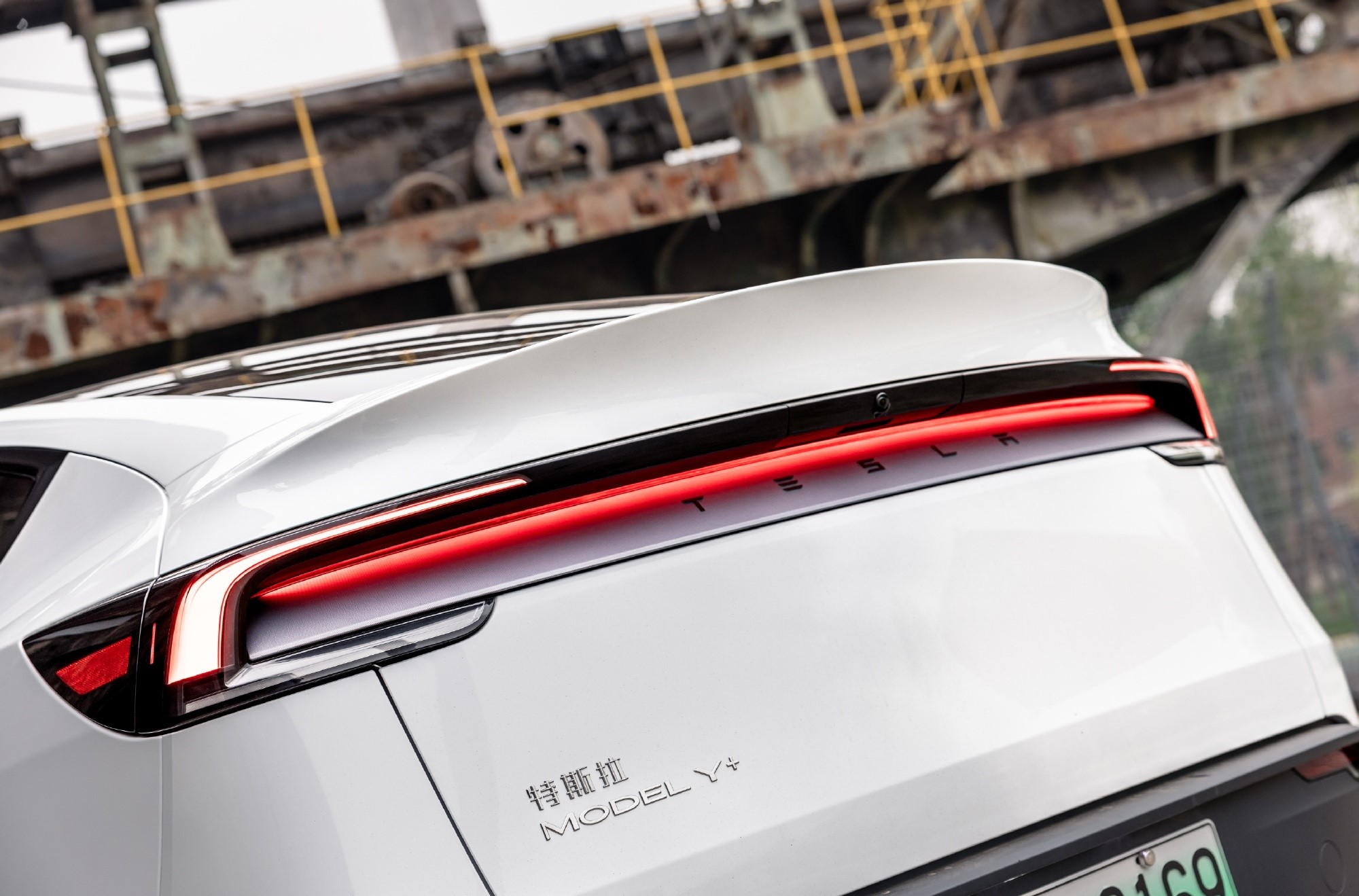

Investor's Corner
Auto experts reveal why Tesla’s batteries hold a comfortable lead in range
One of the reasons why the narrative of the “Tesla Killer” has effectively died is due to the pervading lead that Tesla holds over the competition in terms of range. Amidst the long-predicted entrance of competing vehicles from established automakers including Audi, Jaguar, and Porsche, Tesla’s vehicles have proven to be vastly superior in range, as evidenced by the Model S Long Range, which can last 370 miles in between charges.
Take Tesla’s very first car, the original Tesla Roadster. The vehicle featured Tesla’s efforts at creating a desirable all-electric sports car, and it showed in the Roadster’s robust 245-mile range. There weren’t even Superchargers when the Roadster was released, but the car proved that EVs could comfortably go beyond the 200-mile mark, and then some more. Interestingly, even modern EVs from veteran carmakers are finding it hard to match the Roadster’s 245-mile EPA range. The Audi e-tron, for example, just has 204 miles of range per charge, while the award-winning I-PACE has an EPA rating of 234 miles per charge.
This, according to veteran auto experts Sandy Munro and Mark Ellis of Munro & Associates, has a lot to do with Tesla’s all-electric platform and the company’s proprietary battery tech. Tesla is only 16 years old, and thus, it only has a fraction of the experience that its rivals in the auto market has. Yet in the EV segment, Tesla is among the veterans, having worked solely on electric cars since Day One.

All-Electric
As such, vehicles that Tesla releases such as the Model S, Model X, and Model 3, are designed as EVs from the get-go. In contrast, carmakers such as Mercedes-Benz and Audi opted to convert existing platforms for EV production. This reduces costs, but it is a double-edged strategy in the EV segment, which is starting to gain serious ground in several key markets. “If you’re designing something radically different, or if you want to have something that’s going to be a world-beater in the marketplace, that parts bin is the worst thing imaginable,” Munro said.
This could be seen in the difference between the Porsche Taycan and a vehicle such as the Mercedes-Benz EQC. Porsche opted to design the Taycan from a clean sheet, and the result was an all-electric sports car that can attack the track just as aggressively as the next 911. It even has a frunk like a Tesla, albeit smaller. Mercedes, on the other hand, opted to base the EQC on its existing GLC platform, and the result is an EV that still has echoes of its internal combustion roots. Between the two vehicles, it is easy to see which carmaker put more effort, and it shows. Today, it appears that the non-Tesla EV community is far more excited about the Taycan than they are for the EQC.
Mark Ellis, a senior master of lean design and battery consultant, notes that this is a key advantage that is inherent in Tesla. “One of Elon Musk’s big advantages is, basically, that the vehicle is designed to be an electric car. Musk designed every aspect of this car to be as efficient as possible,” he said.

The Secret Sauce
Apart from their all-electric design, Tesla’s secret sauce for its vehicles lies in their batteries, from the design of the pack to the chemistry of the cells themselves. Comparing the Model 3’s battery pack to those found in other EVs such as the Chevrolet Bolt EV, Nissan Leaf, Jaguar I-PACE, and BMW i3, Ellis stated that Tesla’s battery pack is superior, especially with regards to the placement of battery cells in relation to the current collectors. “It’s the best design of any battery pack I’ve seen so far,” he said.
But this is not all. Ellis added that Tesla’s cylindrical cells have inherent advantages compared to the prismatic or pouch cells used by the competition. Prismatic cells, for one, expand and contract as they charge and discharge, which means that manufacturers using them have to design their battery packs with the necessary parts to handle the expansion and contraction process of the cells. These add unnecessary weight to a battery, which Tesla’s packs don’t have to deal with.
Ultimately, Ellis explained that Tesla’s battery cells simply have a higher energy density than those utilized by its competition. Tesla was able to achieve this because its batteries have superior chemistry, the consultant said. Part of the reason behind this is the fact that Tesla as a company does not really stop innovating. Tesla’s Automotive President Jerome Guillen hinted at this in a previous interview, when he said that the company’s batteries are never frozen since they are always in a state of improvement. “We are improving the design of the cell. The design of the cell is not frozen. It evolves, and we have a nice roadmap of technology improvements for the coming years,” Guillen said.
Range is something that is one of the most important factors consumers consider when purchasing an electric car. With the number of EV charging stations not yet on par with the number of gas stations on the road, it is pertinent for customers for many car buyers to acquire a vehicle that can go the distance. Tesla’s long-range vehicles, together with the company’s Supercharger Network, are a perfect fit for these types of customers.
Investor's Corner
Tesla could save $2.5B by replacing 10% of staff with Optimus: Morgan Stanley
Jonas assigned each robot a net present value (NPV) of $200,000.

Tesla’s (NASDAQ:TSLA) near-term outlook may be clouded by political controversies and regulatory headwinds, but Morgan Stanley analyst Adam Jonas sees a glimmer of opportunity for the electric vehicle maker.
In a new note, the Morgan Stanley analyst estimated that Tesla could save $2.5 billion by replacing just 10% of its workforce with its Optimus robots, assigning each robot a net present value (NPV) of $200,000.
Morgan Stanley highlights Optimus’ savings potential
Jonas highlighted the potential savings on Tesla’s workforce of 125,665 employees in his note, suggesting that the utilization of Optimus robots could significantly reduce labor costs. The analyst’s note arrived shortly after Tesla reported Q2 2025 deliveries of 384,122 vehicles, which came close to Morgan Stanley’s estimate and slightly under the consensus of 385,086.
“Tesla has 125,665 employees worldwide (year-end 2024). On our calculations, a 10% substitution to humanoid at approximately ($200k NPV/humanoid) could be worth approximately $2.5bn,” Jonas wrote, as noted by Street Insider.
Jonas also issued some caution on Tesla Energy, whose battery storage deployments were flat year over year at 9.6 GWh. Morgan Stanley had expected Tesla Energy to post battery storage deployments of 14 GWh in the second quarter.
Musk’s political ambitions
The backdrop to Jonas’ note included Elon Musk’s involvement in U.S. politics. The Tesla CEO recently floated the idea of launching a new political party, following a poll on X that showed support for the idea. Though a widely circulated FEC filing was labeled false by Musk, the CEO does seem intent on establishing a third political party in the United States.
Jonas cautioned that Musk’s political efforts could divert attention and resources from Tesla’s core operations, adding near-term pressure on TSLA stock. “We believe investors should be prepared for further devotion of resources (financial, time/attention) in the direction of Mr. Musk’s political priorities which may add further near-term pressure to TSLA shares,” Jonas stated.
Investor's Corner
Two Tesla bulls share differing insights on Elon Musk, the Board, and politics
Two noted Tesla bulls have shared differing views on the recent activities of CEO Elon Musk and the company’s leadership.

Two noted Tesla (NASDAQ:TSLA) bulls have shared differing views on the recent activities of CEO Elon Musk and the company’s leadership.
While Wedbush analyst Dan Ives called on Tesla’s board to take concrete steps to ensure Musk remains focused on the EV maker, longtime Tesla supporter Cathie Wood of Ark Invest reaffirmed her confidence in the CEO and the company’s leadership.
Ives warns of distraction risk amid crucial growth phase
In a recent note, Ives stated that Tesla is at a critical point in its history, as the company is transitioning from an EV maker towards an entity that is more focused on autonomous driving and robotics. He then noted that the Board of Directors should “act now” and establish formal boundaries around Musk’s political activities, which could be a headwind on TSLA stock.
Ives laid out a three-point plan that he believes could ensure that the electric vehicle maker is led with proper leadership until the end of the decade. First off, the analyst noted that a new “incentive-driven pay package for Musk as CEO that increases his ownership of Tesla up to ~25% voting power” is necessary. He also stated that the Board should establish clear guidelines for how much time Musk must devote to Tesla operations in order to receive his compensation, and a dedicated oversight committee must be formed to monitor the CEO’s political activities.
Ives, however, highlighted that Tesla should move forward with Musk at its helm. “We urge the Board to act now and move the Tesla story forward with Musk as CEO,” he wrote, reiterating its Outperform rating on Tesla stock and $500 per share price target.
Tesla CEO Elon Musk has responded to Ives’ suggestions with a brief comment on X. “Shut up, Dan,” Musk wrote.
Cathie Wood reiterates trust in Musk and Tesla board
Meanwhile, Ark Investment Management founder Cathie Wood expressed little concern over Musk’s latest controversies. In an interview with Bloomberg Television, Wood said, “We do trust the board and the board’s instincts here and we stay out of politics.” She also noted that Ark has navigated Musk-related headlines since it first invested in Tesla.
Wood also pointed to Musk’s recent move to oversee Tesla’s sales operations in the U.S. and Europe as evidence of his renewed focus in the electric vehicle maker. “When he puts his mind on something, he usually gets the job done,” she said. “So I think he’s much less distracted now than he was, let’s say, in the White House 24/7,” she said.
TSLA stock is down roughly 25% year-to-date but has gained about 19% over the past 12 months, as noted in a StocksTwits report.
Investor's Corner
Cantor Fitzgerald maintains Tesla (TSLA) ‘Overweight’ rating amid Q2 2025 deliveries
Cantor Fitzgerald is holding firm on its bullish stance for the electric vehicle maker.

Cantor Fitzgerald is holding firm on its bullish stance for Tesla (NASDAQ: TSLA), reiterating its “Overweight” rating and $355 price target amidst the company’s release of its Q2 2025 vehicle delivery and production report.
Tesla delivered 384,122 vehicles in Q2 2025, falling below last year’s Q2 figure of 443,956 units. Despite softer demand in some countries in Europe and ongoing controversies surrounding CEO Elon Musk, the firm maintained its view that Tesla is a long-term growth story in the EV sector.
Tesla’s Q2 results
Among the 384,122 vehicles that Tesla delivered in the second quarter, 373,728 were Model 3 and Model Y. The remaining 10,394 units were attributed to the Model S, Model X, and Cybertruck. Production was largely flat year-over-year at 410,244 units.
In the energy division, Tesla deployed 9.6 GWh of energy storage in Q2, which was above last year’s 9.4 GWh. Overall, Tesla continues to hold a strong position with $95.7 billion in trailing twelve-month revenue and a 17.7% gross margin, as noted in a report from Investing.com.
Tesla’s stock is still volatile
Tesla’s market cap fell to $941 billion on Monday amid volatility that was likely caused in no small part by CEO Elon Musk’s political posts on X over the weekend. Musk has announced that he is forming the America Party to serve as a third option for voters in the United States, a decision that has earned the ire of U.S. President Donald Trump.
Despite Musk’s controversial nature, some analysts remain bullish on TSLA stock. Apart from Cantor Fitzgerald, Canaccord Genuity also reiterated its “Buy” rating on Tesla shares, with the firm highlighting the company’s positive Q2 vehicle deliveries, which exceeded its expectations by 24,000 units. Cannacord also noted that Tesla remains strong in several markets despite its year-over-year decline in deliveries.
-

 Elon Musk1 day ago
Elon Musk1 day agoWaymo responds to Tesla’s Robotaxi expansion in Austin with bold statement
-

 News1 day ago
News1 day agoTesla exec hints at useful and potentially killer Model Y L feature
-

 Elon Musk2 days ago
Elon Musk2 days agoElon Musk reveals SpaceX’s target for Starship’s 10th launch
-

 Elon Musk3 days ago
Elon Musk3 days agoTesla ups Robotaxi fare price to another comical figure with service area expansion
-

 News1 day ago
News1 day agoTesla’s longer Model Y did not scale back requests for this vehicle type from fans
-

 News1 day ago
News1 day ago“Worthy of respect:” Six-seat Model Y L acknowledged by Tesla China’s biggest rivals
-

 News2 days ago
News2 days agoFirst glimpse of Tesla Model Y with six seats and extended wheelbase
-

 Elon Musk2 days ago
Elon Musk2 days agoElon Musk confirms Tesla is already rolling out a new feature for in-car Grok








